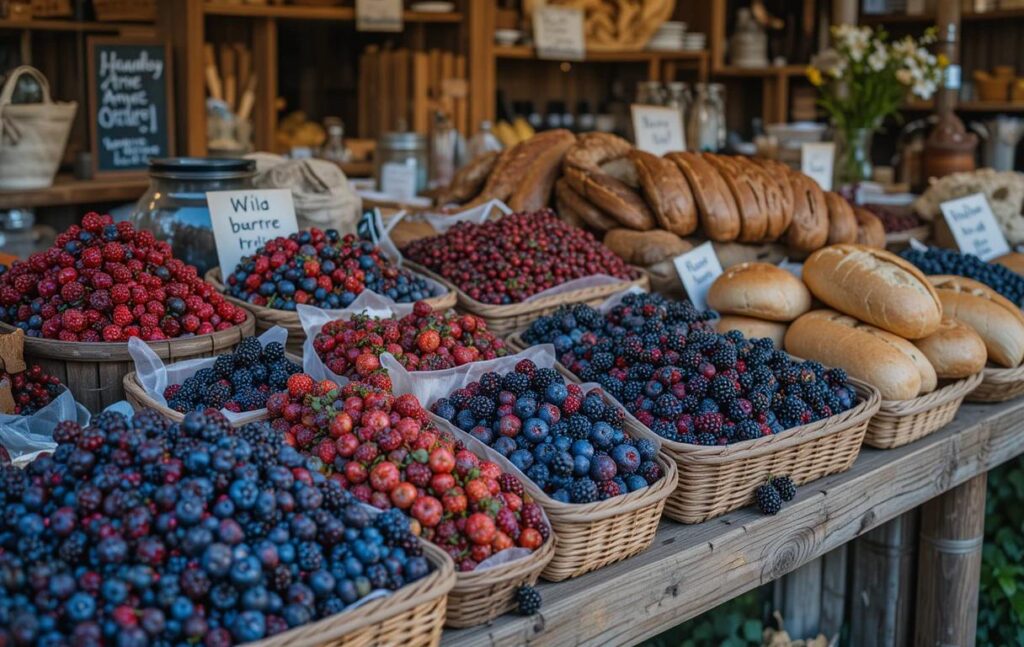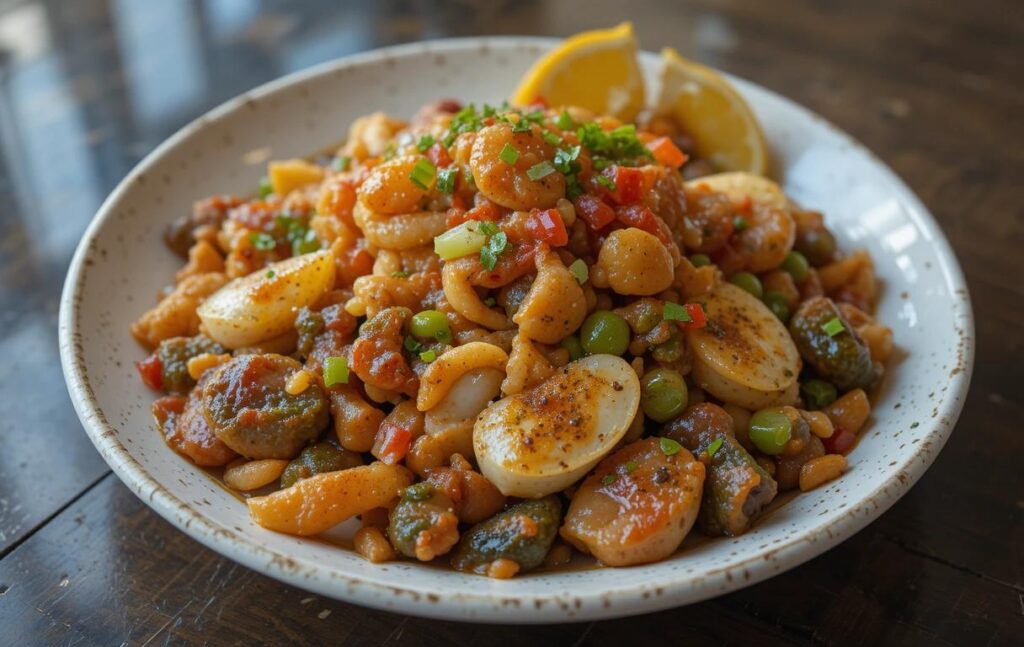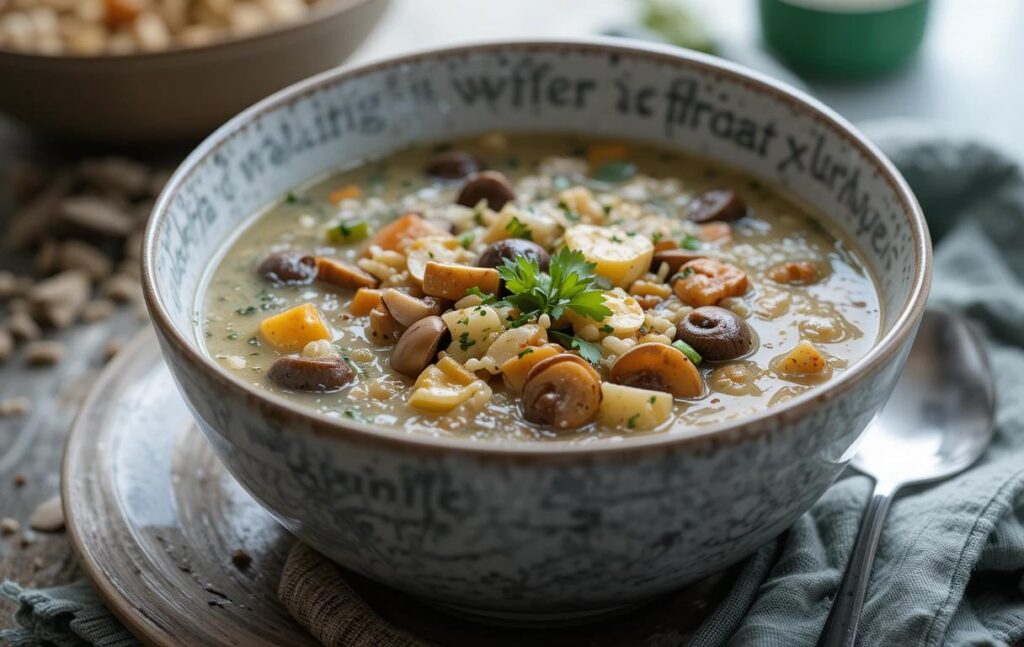What is homemade recipes and stories from Winnipeg and Beyond?
Homemade recipes go beyond the kitchen—they are a window into the soul of a family, a region, and even an era. In Winnipeg, a city rich in cultural diversity, these recipes tell tales of perseverance, celebration, and innovation. From bannock bread baked in community ovens to stories of new immigrants blending their traditions with Canadian flavors, the culinary tales from Winnipeg are as diverse as its people.
This article explores the magic of homemade recipes and stories from Winnipeg and beyond. Whether you’re drawn to the nostalgia of old family meals or excited about trying modern takes on classic dishes, there’s something here for everyone. Let’s embark on this flavorful journey together!
The Heart of Homemade Recipes
Homemade recipes are more than a collection of ingredients—they are a reflection of love, creativity, and culture. Whether it’s the aroma of freshly baked bread wafting through the kitchen or the taste of a family’s secret sauce recipe, these dishes carry an emotional depth that connects us to people and places.
Why Homemade Recipes Matter
Homemade recipes play a vital role in our lives, touching on various aspects of our well-being and social connections:
1. Emotional Connections
Sharing a homemade meal fosters an unparalleled sense of community and love. These recipes often tell the stories of family gatherings, celebrations, and moments of comfort during challenging times. For many in Winnipeg, homemade meals are a way to preserve traditions passed down through generations.
For instance, consider a family recipe for bannock—a simple yet iconic bread that represents Indigenous culture and history. Every bite becomes a memory, evoking the stories shared during its preparation and the warmth of shared meals.
2. Health Benefits
Homemade recipes are not just delicious—they’re healthier too. When you cook at home, you have complete control over the ingredients. This means fewer preservatives, lower sodium, and a greater emphasis on fresh, wholesome components.
In Winnipeg, sourcing local ingredients like wild rice or pickerel ensures your meals are nutrient-rich and environmentally friendly. Choosing these options over processed alternatives is a conscious step toward better health.
3. Budget-Friendly Options
Cooking at home is cost-effective, allowing families to stretch their budget while enjoying flavorful meals. By purchasing seasonal and locally sourced ingredients, Winnipeg residents often find creative ways to craft hearty dishes without overspending.
A Nostalgic Connection
For many, homemade recipes serve as a time machine, transporting us back to cherished moments. Imagine sitting in your grandmother’s kitchen, watching her carefully knead dough or sprinkle spices into a simmering pot. These memories are treasures, and every homemade recipe we recreate is a way to honor those we love.
For instance, Winnipeg’s vibrant Ukrainian community has kept the tradition of making pierogies alive for generations. These stuffed dumplings are a reminder of the enduring power of culinary heritage.
Homemade Recipes as Storytellers
Every recipe tells a story. From the reason certain ingredients are chosen to the methods passed down by ancestors, food becomes a living document of history and culture.
For Winnipeg residents, recipes reflect the city’s multicultural spirit. Ingredients and techniques from Indigenous, Ukrainian, French, and other cultures merge, creating dishes unique to the region. These stories, told through food, celebrate the city’s diversity and shared history.
Winnipeg’s Culinary Legacy
Winnipeg’s culinary culture is a reflection of its rich history and diverse community. Nestled in the heart of Canada, the city has long been a melting pot of Indigenous traditions, immigrant influences, and regional ingredients. This unique combination has given rise to a variety of cherished homemade recipes that continue to bring people together.
Unique Ingredients of Winnipeg

One of the most distinctive aspects of Winnipeg’s culinary legacy is its use of local, seasonal ingredients. These not only lend a regional flavor to recipes but also support sustainable and community-focused cooking.
1. Wild Rice
A staple in Indigenous cooking, wild rice grows naturally in Manitoba’s lakes and rivers. It’s not only nutritious but also incredibly versatile, forming the base for dishes like soups, casseroles, and salads.
2. Pickerel (Walleye)
Freshwater fish like pickerel, caught in Lake Winnipeg, are a hallmark of the region’s cuisine. Often pan-fried or baked, this fish is a popular choice in many homemade meals.
3. Saskatoon Berries
These sweet, tangy berries are a Manitoba favorite, frequently used in pies, jams, and sauces. They add a unique twist to desserts and pair wonderfully with savory dishes like game meat.
4. Bannock Ingredients
Simple yet profound, bannock bread ingredients—flour, water, and fat—hold deep historical and cultural significance for Indigenous communities.
Top Winnipeg Homemade Dishes
Winnipeg’s homemade recipes often showcase its local ingredients while reflecting the multicultural influences that shape the city. Here are some iconic examples:
1. Wild Rice Soup
A comforting dish, wild rice soup is often enriched with cream, herbs, and seasonal vegetables. This recipe has become a go-to during Winnipeg’s cold winters, bringing warmth and nourishment to many homes.
2. Bannock
Originally an Indigenous recipe, bannock bread has evolved to include various versions, such as baked or fried. Its simplicity and versatility make it a staple in many Winnipeg households.
3. Pierogies
A nod to the city’s Ukrainian roots, pierogies are stuffed dumplings typically filled with potatoes, cheese, or sauerkraut. They’re often served with sour cream and caramelized onions for a comforting meal.
4. Pickerel Fillets
Pan-fried pickerel, lightly seasoned and served with lemon, is a classic homemade dish that celebrates Manitoba’s freshwater bounty.
5. Saskatoon Berry Pie
This dessert is a favorite during berry season. The berries’ natural sweetness and deep color make for a show-stopping pie that’s often enjoyed at family gatherings.
Celebrating Heritage Through Food
The recipes that define Winnipeg’s culinary identity are more than just meals—they’re symbols of resilience and togetherness. From the bannock bread that represents Indigenous perseverance to pierogies that reflect the hardships and triumphs of Ukrainian settlers, each dish tells a story of survival, adaptation, and celebration.
These recipes have become a bridge between generations, connecting people to their roots while encouraging new interpretations. For instance, young chefs in Winnipeg are now creating fusion dishes, blending traditional ingredients with modern techniques.
Stories That Travel Beyond
Homemade recipes hold the power to transcend time and place, carrying with them personal memories and cultural heritage. From Winnipeg’s kitchens to communities worldwide, these recipes serve as a bridge that connects the local to the global. Behind every dish lies a story, and when shared, it has the potential to inspire and unite.
Family Tales of Culinary Heritage
Every family has a recipe with a story—a dish that’s made for every special occasion or one that provides comfort during hard times. These recipes often represent much more than food; they embody traditions, memories, and even survival.
1. The Multicultural Roots of Winnipeg’s Recipes
Winnipeg’s diverse population means that the city’s food culture reflects influences from around the world. For instance, pierogies, introduced by Ukrainian settlers, have become a beloved comfort food across all communities. Meanwhile, bannock, an Indigenous staple, has been embraced and adapted by various cultures.
Families across Winnipeg pass down these recipes with pride. A grandmother’s pierogi-making technique or an Indigenous elder’s bannock recipe becomes a story that weaves generations together. Each adaptation adds a unique flavor to the original, making these dishes a reflection of the family itself.
2. Personal Connections
A story shared by a Winnipeg resident recalls her grandmother’s Saskatoon berry pie, made every summer after a family outing to pick berries. “The pie wasn’t just dessert,” she says. “It was a ritual—filled with laughter, sticky fingers, and the smell of sugar bubbling in the oven. It’s a taste of home I’ll never forget.”
From Winnipeg to the World

While some recipes stay within the family, others travel beyond borders, introducing Winnipeg’s unique flavors to the world.
1. Sharing Recipes Across Cultures
Immigrants to Winnipeg often blend their traditional cuisines with local ingredients, creating entirely new dishes. For instance, fusion recipes like pickerel tacos with a hint of Ukrainian seasoning or Saskatoon berry tiramisu represent how Winnipeg continues to inspire culinary creativity.
Similarly, when Winnipeg residents travel or relocate, they take their recipes with them. A former Winnipegger living abroad might introduce their friends to wild rice soup or share bannock bread at a potluck, spreading the city’s culinary identity far and wide.
2. Influencing Modern Cuisine
Winnipeg’s food culture has also influenced professional chefs, both locally and internationally. Many chefs celebrate the simplicity and authenticity of homemade recipes, incorporating Winnipeg-inspired dishes into their menus. This not only keeps these traditions alive but also introduces them to a wider audience.
Preserving Stories Through Food
One of the most beautiful aspects of food is its ability to preserve stories. Cooking a dish from a loved one’s recipe book allows us to relive their legacy. In Winnipeg, efforts to document traditional recipes are gaining momentum. Community cookbooks and cultural festivals ensure that these culinary treasures are not forgotten.
Example: A cookbook published by a local Winnipeg group includes personal anecdotes alongside recipes, giving readers insight into the history and emotions tied to each dish.
By sharing these stories, Winnipeg residents not only preserve their heritage but also invite others to become part of it. Recipes like Saskatoon berry pie or pickerel chowder become symbols of connection, linking people through the universal language of food.
How to Create Your Own Homemade Recipe Story
Every homemade recipe tells a unique tale, blending flavors with personal memories and cultural heritage. By documenting and sharing your own culinary creations, you can preserve traditions, celebrate family moments, and even inspire others. Here’s how to craft a compelling recipe story that’s as delightful as the dish itself.
Capturing the Essence of Home Cooking
Creating a recipe story begins with recognizing what makes the dish special. Is it the origin, the ingredients, or the memories tied to it? Here’s how to bring out its essence:
1. Reflect on the Recipe’s Origins
Ask yourself:
- Where did this recipe come from?
- Who introduced it to you?
- How has it evolved over time?
For example, a family’s pierogi recipe might have started with a Ukrainian ancestor and adapted to include locally sourced Winnipeg ingredients like wild rice or pickerel. Highlighting these details adds depth to the story.
2. Incorporate Personal Memories
Recipes are more than just instructions—they’re experiences. Share anecdotes about the first time you made the dish or a memorable moment it was served. Did it become a staple at holiday gatherings? Did you bond with a loved one while learning to prepare it?
Example: “I remember making bannock with my grandfather on a chilly Winnipeg afternoon. As the snow fell outside, he’d tell me stories of how this simple bread nourished his family through tough times.”
3. Highlight the Ingredients
Describe the key components of the recipe and their significance. For Winnipeg-inspired dishes, local ingredients like Saskatoon berries or wild rice bring a distinct character to the story. Mention how sourcing these ingredients adds to the experience of cooking the dish.
Structuring Your Recipe Story
To create a narrative that flows seamlessly, follow this structure:
Start with a brief overview of the recipe and why it’s meaningful to you.
Example: “This wild rice soup recipe is a staple in our family, passed down from my grandmother, who would always make it during Winnipeg’s chilly winters.”
The Backstory
Share details about the recipe’s origins and how it became a part of your life. Include cultural or historical context if applicable.
Ingredients and Preparation
Provide the recipe in detail, but don’t shy away from sharing tips or shortcuts you’ve discovered along the way.
The Experience of Sharing
Describe what it’s like to serve or share this dish. Does it bring people together? What reactions do you usually get?
A Call to Action
Encourage readers to try the recipe themselves and make it part of their story.
Tips for Documenting Recipes
- Use Visuals: Photos of the dish in progress or old family pictures related to the recipe add a personal touch.
- Handwritten Notes: Include scans of handwritten recipes to evoke nostalgia.
- Cultural Touchstones: Highlight elements of the recipe that connect it to a specific culture or region.
Creating New Traditions
While preserving family recipes is important, don’t hesitate to create your own. Experiment with new ingredients or techniques and pair them with moments worth remembering. Over time, these innovations can become traditions themselves, enriching your family’s culinary legacy.
Modern Twists on Winnipeg Classics
While Winnipeg’s culinary traditions are steeped in history and culture, modern chefs and home cooks alike are finding new ways to reinvent these timeless recipes. By adding contemporary techniques, global influences, and creative flair, these updated dishes honor the past while embracing the present.
Reimagining Tradition
Modern twists on classic recipes breathe new life into Winnipeg’s culinary heritage. Here’s how tradition is blending seamlessly with innovation:
1. Bannock Reinvented
The simple yet iconic bannock bread has been a staple for generations. Modern variations include:
- Herb-Infused Bannock: Adding rosemary, thyme, or chives to the dough for a savory twist.
- Bannock Tacos: Using bannock as a base for tacos, topped with pickerel, salsa, and fresh greens for a fusion of Indigenous and Mexican flavors.
2. Gourmet Pierogies
Pierogies, a beloved Ukrainian dish, are being reimagined with creative fillings:
- Truffle and Wild Mushroom Pierogies: A luxurious spin with earthy, rich flavors.
- Saskatoon Berry Pierogies: Turning a savory classic into a dessert, filled with local berries and served with vanilla cream.
3. Wild Rice as a Global Star
Wild rice, a Manitoba treasure, is being used in new and unexpected ways:
- Wild Rice Sushi: A fusion dish combining local ingredients with Japanese techniques.
- Wild Rice Risotto: A creamy, hearty dish that replaces traditional arborio rice with Winnipeg’s wild rice.
4. Pickerel with a Twist
Pickerel, a favorite freshwater fish in Winnipeg, is being transformed into modern masterpieces:
- Pickerel Ceviche: A light and refreshing dish using citrus and herbs.
- Smoked Pickerel Chowder: An elevated take on a traditional fish soup, enhanced with smoked flavors and artisanal bread on the side.
Balancing Old and New
While innovation is exciting, it’s important to retain the essence of traditional recipes. Here are some ways to strike the perfect balance:
1. Preserving Core Flavors
Modern adaptations should respect the original flavor profiles that make these dishes special. For example, even in a truffle pierogi, the dough and texture must stay true to its roots.
2. Highlighting Local Ingredients
Maintaining a connection to Winnipeg’s regional ingredients, like wild rice or Saskatoon berries, ensures the dish remains grounded in its origins.
3. Honoring Cultural Significance
Innovations should acknowledge the cultural stories behind the dishes, ensuring that tradition is celebrated rather than overshadowed.
The Role of Chefs and Home Cooks
Local chefs in Winnipeg are at the forefront of this culinary evolution, introducing these reimagined classics in their menus. However, home cooks are equally important in keeping these traditions alive while experimenting with fresh ideas in their kitchens.
Spotlight: A Winnipeg chef recently gained recognition for her “Bannock Bruschetta,” which pairs crispy bannock slices with fresh tomatoes, basil, and balsamic glaze. Her creation perfectly marries tradition with modern dining trends.
Why Modern Twists Matter
Modernizing traditional recipes ensures they stay relevant in today’s fast-changing culinary world. These innovations attract younger generations who might otherwise overlook older dishes and introduce Winnipeg’s flavors to a global audience.
Recipes You Can Try Today

Whether you’re a seasoned cook or a curious beginner, exploring Winnipeg’s culinary classics is a rewarding experience. Below are step-by-step recipes for two iconic dishes with cultural significance and a modern twist: Bannock Bread and Wild Rice Soup.
1. Bannock Bread: A Classic Favorite
Ingredients:
- 3 cups all-purpose flour
- 1 tbsp baking powder
- 1 tsp salt
- 1/3 cup vegetable oil or melted butter
- 1 cup water (adjust as needed)
- Optional: Chopped herbs like rosemary or chives for a savory variation
Instructions:
- Preheat and Mix Dry Ingredients
Preheat your oven to 400°F (200°C). In a large mixing bowl, combine the flour, baking powder, and salt. Mix well. - Add the Wet Ingredients
Gradually add the vegetable oil and water, stirring until the dough comes together. Adjust the water if necessary to achieve a soft but not sticky texture. - Knead and Shape
Turn the dough onto a floured surface and knead gently for 2–3 minutes. Shape it into a round or flatbread, depending on your preference. - Bake or Fry
For baking, place the dough on a parchment-lined baking sheet and bake for 20–25 minutes, or until golden brown. For a fried version, heat oil in a skillet and cook until both sides are crispy and golden. - Serve and Enjoy
Serve warm with butter, jam, or as a base for savory toppings like smoked salmon or pickerel ceviche.
2. Wild Rice Soup
Ingredients:
- 1 cup wild rice
- 1 tbsp olive oil
- 1 onion, finely chopped
- 2 carrots, diced
- 2 celery stalks, diced
- 4 cups chicken or vegetable broth
- 1 cup cream (or coconut milk for a dairy-free option)
- 1 tsp dried thyme
- Salt and pepper to taste
Instructions:
- Cook the Wild Rice
Rinse the wild rice under cold water. In a pot, bring 3 cups of water to a boil, add the rice, and simmer for 40–45 minutes until tender. Drain and set aside. - Sauté the Vegetables
Heat olive oil in a large pot over medium heat. Sauté the onion, carrots, and celery until softened (about 5 minutes). - Add Broth and Simmer
Pour in the broth and add the cooked wild rice. Season with thyme, salt, and pepper. Simmer for 15–20 minutes to allow the flavors to meld. - Finish with Cream
Stir in the cream and heat gently, ensuring the soup doesn’t boil. Adjust seasoning as needed. - Serve and Enjoy
Ladle the soup into bowls, garnish with fresh herbs, and serve with crusty bread or bannock.
Cooking Tips for Success
- Quality Ingredients: Use fresh, locally sourced ingredients to elevate the flavor of these recipes.
- Customize: Feel free to add personal touches like smoked fish to the soup or garlic butter to the bannock.
- Preserve Leftovers: Both recipes can be stored in the fridge for up to 3 days, making them perfect for meal prep.
FAQs About Homemade Recipes and Stories
1. How can I preserve my family recipes for future generations?
Write them down in a notebook or digital document, including personal anecdotes. Sharing these recipes during family gatherings is another way to keep them alive.
2. What makes Winnipeg’s homemade recipes unique?
The use of local ingredients like wild rice and Saskatoon berries, combined with multicultural influences, creates dishes that are both flavorful and culturally rich.
3. Are homemade recipes healthier than store-bought alternatives?
Yes, because they use fresh ingredients and avoid preservatives. Plus, you can control the portion size and nutritional content.
4. Can I modernize traditional dishes without losing their essence?
Absolutely! Focus on retaining the key ingredients and flavor profiles while experimenting with presentation or additional elements.
5. What are some affordable local ingredients to use in Winnipeg?
Wild rice, pickerel, and seasonal berries like Saskatoon berries are budget-friendly options with high nutritional value.
6. How can I make traditional recipes vegan or gluten-free?
Substitute ingredients like cream with coconut milk and all-purpose flour with gluten-free flour to adapt recipes to dietary needs.
Conclusion: Connecting Through Food
Food is a universal language, and homemade recipes and stories are its most heartfelt expression. Winnipeg’s culinary traditions, with their rich history and vibrant flavors, remind us of the importance of preserving heritage while embracing change. By sharing and modernizing these recipes, we not only honor the past but also create new memories for future generations.
Whether it’s the comforting taste of wild rice soup on a cold day or the joy of reinventing bannock for a modern table, these dishes tell stories of connection, resilience, and love. So, roll up your sleeves, gather your ingredients, and start creating your own homemade recipe story today.
Winnipeg Rye Bread
Related Recipes
- “Tuna Tomato Sauce Pasta Recipe“: A tomato-based recipe showcasing another way to use tomatoes.
- “Baked Chicken Fettuccine Alfredo with Broccoli“: Another comforting dish that can be complemented with tomato-based sauces.
Ingredient-Focused Content
- “Lions Mane Mushroom Recipe“: Suggest using a tomato gravy as a flavorful addition for plant-based dishes.
Cooking Techniques and Enhancements
- “Mango Habanero Salsa“: Explore complementary uses of sauces and gravies for flavor diversity.
Storage and Reuse Tips
- “Sous Vide Recipes“: Recommend tomato gravy as a sauce for sous vide-cooked meats or vegetables.
- “Ocean Spray Cranberry Sauce Recipe“: Guide readers on making and storing sauces, including tomato gravy.

